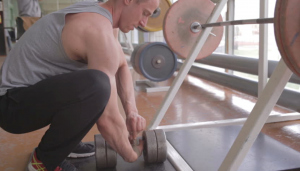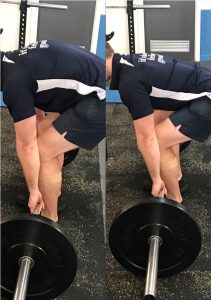Written by; Nick Angus (Exercise Science Student- Deakin University)
Many exercise physiologists, personal trainers and strength and conditioning coaches teach the importance of maintaining a neutral spine throughout strength training exercise. Numerous studies have pointed to this being pivotal in preventing chronic back injuries that can arise holding spinal flexion under loads. However, there is opposing evidence suggesting this debate isn’t so black and white. Indeed, many researchers argue spinal flexion during strength training may be of a bio mechanical advantage.
The traditional view in strength training literature suggests lifting heavy loads with a bent back increases the risk of sustaining injuries such as bulging or slipped discs?
There is emerging research to suggest there are ‘shades of grey’ in this neutral spine debate. We must be clear that if a beginner in the gym new to strength training attempts to lift a weight heavier than they are capable of, there will be an increased risk of injury. However, the emerging research is suggesting that for more advanced lifters training with smart and safe procedures, a flexed spine in weight training can be performed without risk.
This research argues this is because the spine becomes strengthened during exercise just like any other bone or joint in the body.
For example, if you consider the knee joint when performing squats, it’s not just the muscles that are being strengthened from the exercise. The surrounding structures such as the bones, ligaments and connective tissues are also become stronger. This principle also applies to the spine. The ‘flexed spine’ advocates suggest when lifting weights with a flexed spine, we can become stronger and withstand greater loads.
An example of this within the gym environment is of a controlled lift with a flexed spine to bend down and pick a dumbbell off the floor in preparation for an exercise.

With the ‘flexed spine’ teaching, this technique is not only suggested, it is encouraged to engage muscles that they believe would otherwise be neglected. This principle argues that people bend down with a perfect squat-like technique to perform everyday tasks with the fear of higher bent spine injury implications. The challenge arises when trying to do this every time, and the inefficiency associated with also maintain perceived perfect technique.
So we know that strengthening the spine is a vital part of the benefits of weight training for your overall health. Lifting technique should be considered as part of your wider consultation of exercise planning. We are aware that individual postural positions and movement patterning must be considered when designing an exercise program. As such; a safe lifting technique must be considered on an individual basis – as one size does not fit all when it comes to exercise prescription.

